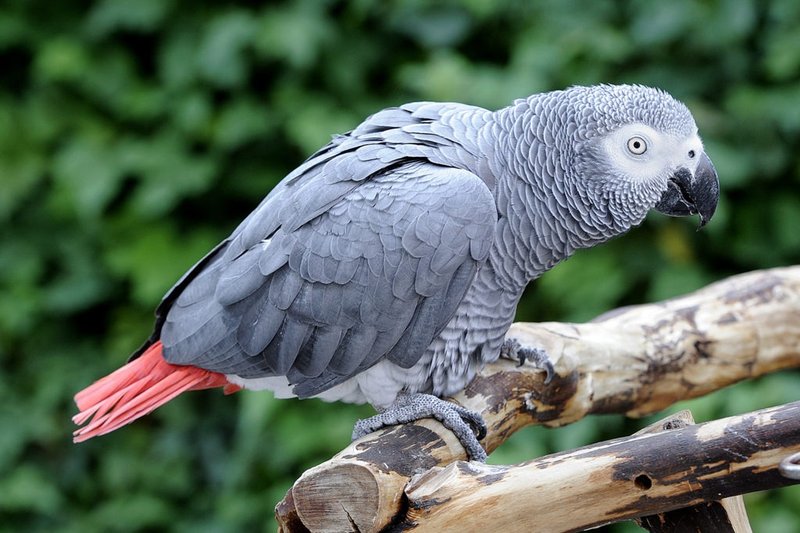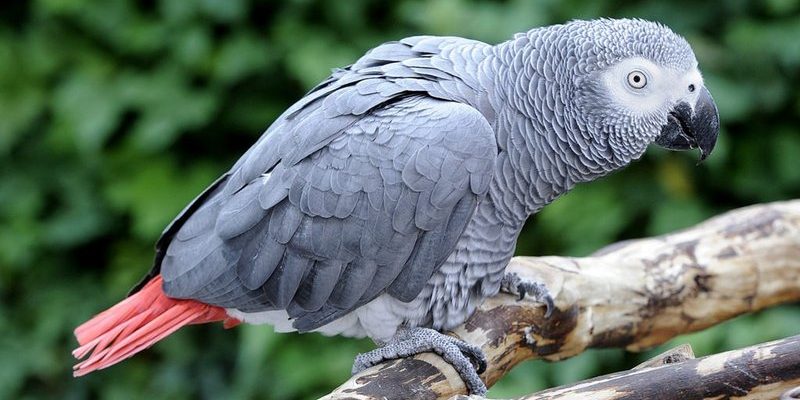
The Grey Parrot, scientifically known as Psittacus erithacus, is a fascinating bird that captivates many with its intelligence and charm. Imagine having a feathered friend that can mimic human speech and even hold a conversation! These birds are not just regular pets; they’re known for their remarkable cognitive abilities. If you’ve ever seen a Grey Parrot perform tricks or repeat phrases, you might have wondered how such a small creature can be so expressive.
Grey Parrots are native to the tropical rainforests of Africa, thriving in rich, lush environments. With their striking grey plumage and bright red tails, they are one of the most recognizable members of the parrot family. Keeping a Grey Parrot is like having a playful companion that brings joy and excitement into your home. But caring for them is no small feat; it requires time, patience, and understanding of their needs and behaviors.
Physical Characteristics
One of the most striking features of the Grey Parrot is its beautiful feather coloration. They have primarily grey feathers, which can sometimes appear almost silver in the light, and a contrasting vibrant red tail. Adult Grey Parrots typically measure between 12 to 14 inches in length, making them a medium-sized bird. Their wings are strong, allowing them to fly gracefully through their forest habitats.
Another interesting aspect of their anatomy is their beak. It’s curved and strong, designed specifically to crack open nuts and seeds. This is essential for their diet, which consists mainly of seeds, nuts, fruits, and sometimes even vegetables. Their feet are zygodactyl, meaning they have two toes facing forward and two backward, which helps them grasp branches and food with ease.
Habitat and Range
Grey Parrots are predominantly found in the rainforests of West and Central Africa. They prefer dense, tall trees that provide plenty of cover and food sources. However, they’re also adaptable birds that can thrive in various environments, including nearby woodlands and savannas. Their ability to adapt to different habitats has contributed to their reputation as some of the most resilient parrots.
Despite their adaptability, Grey Parrots are facing threats due to habitat destruction and the illegal pet trade. Deforestation has significantly reduced their living space, leading to a decline in their wild populations. Preserving their natural habitats is vital not only for their survival but also for maintaining the biodiversity of the regions they inhabit.
Diet and Feeding Habits
When it comes to food, Grey Parrots are primarily herbivorous. In the wild, their diet consists of a variety of seeds, nuts, fruits, and leafy vegetation. They have strong, curved beaks that allow them to crack open tough seeds, making it easy for them to access the nutritious contents inside. They are foragers by nature, spending a good part of their day searching for food and exploring their surroundings.
In captivity, it’s crucial to provide a balanced diet that mimics their natural feeding habits. A mix of quality pellets, fresh fruits, and vegetables is essential. Foods like apples, carrots, and leafy greens are excellent choices. Parrots can also enjoy occasional treats like nuts but should not be overfed due to high-fat content. Remember, a well-fed parrot is a happy parrot!
Social Behavior
The social nature of Grey Parrots is one of their most endearing qualities. In the wild, they live in flocks, often forming strong bonds with one another. This social structure helps them thrive, as they benefit from protection in numbers and shared resources. When kept as pets, they often seek companionship from their human families as well.
Grey Parrots are known for their vocalizations and can learn an impressive range of sounds and words. Their ability to mimic human speech is not just for entertainment; it reflects their desire to communicate and connect. If there’s a Grey Parrot in your home, you might find them chattering away, repeating phrases they’ve picked up, or even mimicking household sounds like ringing phones or laughter!
Training and Intelligence
Grey Parrots are highly intelligent birds, often compared to the cognitive abilities of a young child. This intelligence makes them quick learners, which is fantastic news for anyone looking to train their parrot. They respond well to positive reinforcement and enjoy engaging activities that challenge their minds.
Training sessions can include teaching them new words, tricks, or commands. Start with simple words and gradually introduce more complex phrases. Patience and consistency are key during training. You might be surprised by how quickly your Grey Parrot picks up on your communication and starts to express itself in delightful ways.
Health and Care
Keeping your Grey Parrot healthy is essential for a long, happy life. Regular veterinary check-ups are a must to monitor their health and detect any potential issues early on. Common health concerns for Grey Parrots include feather plucking, respiratory infections, and vitamin deficiencies. A balanced diet, combined with a clean living environment, can help prevent many of these problems.
Additionally, providing mental stimulation through toys and social interactions is vital. Boredom can lead to behavioral issues, so rotate their toys and spend quality time with them daily. Creating a comfortable and stimulating environment can make all the difference in your parrot’s well-being.
Fun Facts about Grey Parrots
| Average Lifespan: | 40 to 60 years |
| Size: | 12 to 14 inches |
| Weight: | 300 to 400 grams |
| Diet: | Seeds, nuts, fruits, and vegetables |
| Native Habitat: | Tropical rainforests of Africa |
| Social Behavior: | Highly social and intelligent |
Conservation Status
The conservation status of the Grey Parrot is a topic of concern among wildlife enthusiasts and conservationists. Due to habitat loss and capture for the pet trade, their numbers in the wild have significantly declined. They are classified as Near Threatened by the International Union for Conservation of Nature (IUCN). This classification highlights the need for immediate action to protect these incredible birds.
Conservation efforts are underway to help preserve Grey Parrots’ natural habitats and reduce illegal trapping. Organizations are working to educate the public about the importance of protecting these magnificent creatures. Supporting these initiatives is crucial for ensuring future generations can enjoy the beauty of Grey Parrots in the wild.
Adopting and Caring for a Grey Parrot
If you’re considering welcoming a Grey Parrot into your home, it’s essential to understand the commitment involved. These birds require attention, social interaction, and mental stimulation. They thrive on companionship and can become stressed if left alone for too long. A good rule of thumb is to spend several hours a day interacting with them.
Prepare your home by ensuring you have a safe, spacious cage that allows for movement and play. Regularly clean their living space and provide fresh food and water daily. Consider bonding with your parrot through playtime, training sessions, or simply sitting together while you watch TV or read. Grey Parrots respond well to routine, so establishing a daily schedule helps them feel secure.
Common Misconceptions
There are many myths surrounding Grey Parrots that can lead to misunderstandings. One common misconception is that all parrots are loud and disruptive. While it’s true that Grey Parrots can be vocal, they can also be quite calm and quiet, especially if they feel safe and secure in their environment. With proper training and socialization, you can help your parrot develop appropriate vocal habits.
Another myth is that Grey Parrots only mimic sounds without understanding them. In reality, these birds are capable of associating words with meanings. They can learn to express desires, emotions, and even respond to questions with relevant phrases, showcasing their sophisticated intelligence. This ability is what makes them such engaging and delightful companions!
FAQ
How long do Grey Parrots live?
Grey Parrots can live between 40 to 60 years in captivity with proper care. Some have even been known to live longer, especially when they receive a balanced diet, regular veterinary check-ups, and ample social interaction. This long lifespan means adopting a Grey Parrot is a long-term commitment.
Can Grey Parrots talk like humans?
Yes, Grey Parrots are renowned for their ability to mimic human speech. They can learn a wide variety of words and phrases, often using them in context. This ability reflects their intelligence and desire to communicate with their human companions.
What do I need to consider before adopting a Grey Parrot?
Before adopting a Grey Parrot, it’s crucial to understand their social needs, dietary requirements, and the time commitment involved. They require daily interaction, a stimulating environment, and consistent care to thrive. Make sure you’re ready for the responsibility that comes with having such an intelligent pet.
Are Grey Parrots good pets for beginners?
Grey Parrots can be suitable pets for beginners who are willing to invest time and effort into their care and training. They require social interaction and mental stimulation, so it’s important to be prepared for an engaging and sometimes challenging experience. However, their friendly nature and intelligence can make them wonderful companions.
What is the best diet for a Grey Parrot?
A balanced diet for a Grey Parrot includes high-quality pellets, fresh fruits, and vegetables. Foods like apples, carrots, leafy greens, and nuts should be part of their daily diet. It’s essential to provide a variety to ensure they receive the nutrients they need for optimal health.
How can I keep my Grey Parrot entertained?
Keeping your Grey Parrot entertained can include providing various toys, engaging in training sessions, and allowing them time outside their cage for exploration. Rotate their toys regularly to maintain their interest and provide challenges that stimulate their minds.
What should I do if my Grey Parrot is plucking its feathers?
Feather plucking can be a sign of stress, boredom, or health issues in Grey Parrots. If you notice your parrot engaging in this behavior, it’s essential to consult a veterinarian to rule out any health problems. Additionally, providing more mental stimulation and social interaction can help alleviate this behavior.
Can Grey Parrots live with other pets?
Grey Parrots can coexist with other pets, but introductions need to be managed carefully. Their social nature means they can be friendly, but they can also be territorial. Monitor interactions between them and other pets, ensuring everyone feels safe and secure.
Do Grey Parrots require a special cage?
Yes, Grey Parrots require a spacious cage that allows for flying and movement. Look for a cage designed for larger birds to provide ample space for them to stretch their wings and play. Ensure the bars are sturdy and spaced appropriately to keep your parrot safe.
What is the best age to adopt a Grey Parrot?
While it is possible to adopt Grey Parrots of any age, younger birds, usually between 6 months and 2 years, may be easier to train and bond with. Older parrots may already have established behaviors, and their past experiences can affect their adaptability to new homes.
How can I help my Grey Parrot bond with me?
Bonding with your Grey Parrot takes time and patience. Spend quality time together, talking to them, and allowing them to explore their environment with you. Offering treats during training sessions and respecting their space will help foster trust and companionship.

